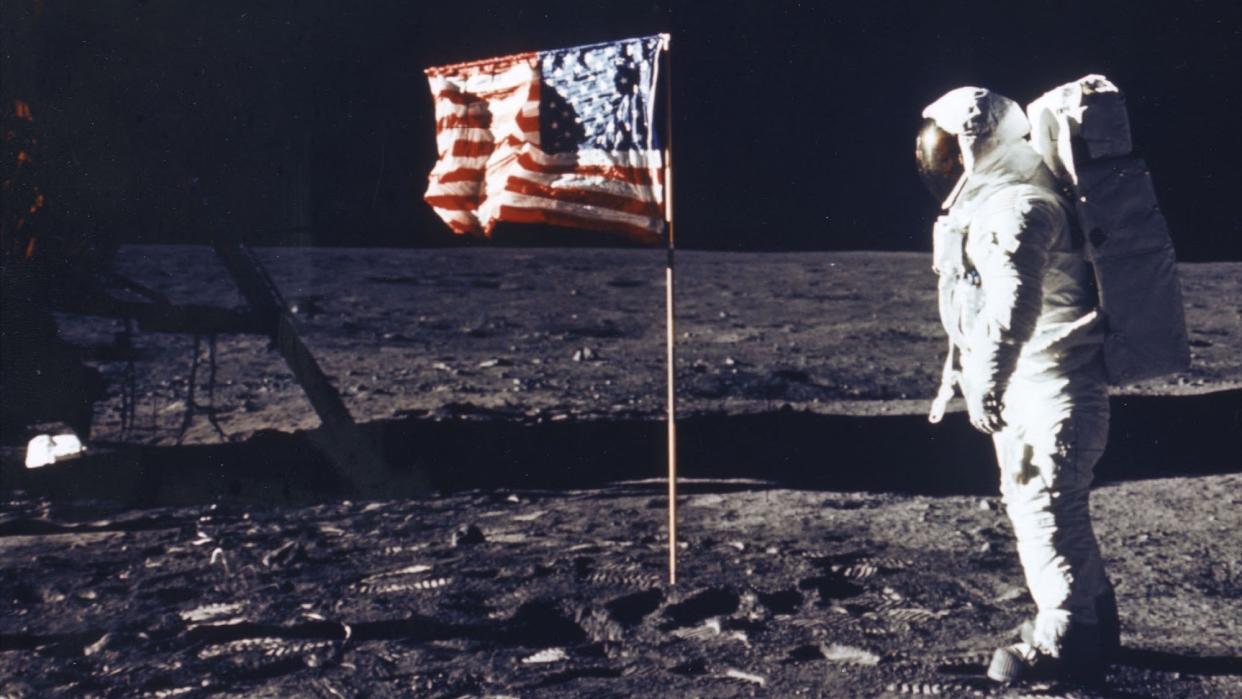All the major moon landings so far

We are in the era of a new space race, with multiple nations trying to return to the surface of the moon. The United States' Artemis mission is aiming to put man back on the moon just as it did in 1969. Most recently, a private lunar lander called Odysseus successfully landed on the moon in the first U.S. mission to the moon since NASA ended the Apollo program in 1972. Humanity has attempted to land both manned and unmanned technology on the moon, marking some of the biggest moments in scientific history.
Luna 2 (Sept. 12, 1959)
The Soviet Union's Luna 2 was the "first man-made object to make contact with another planetary body," Space.com said. The unmanned craft was the first to reach the moon's surface. The rocket was able to report that the moon had "no magnetic field or radiation belts," and "deposited Soviet emblems on the lunar surface, carried in two metallic spheres," NASA said. This landing was an instrumental landmark in the space race of the 1950s and 60s between the USSR and the U.S.
Luna 9 (Feb. 3, 1966)
While Luna 2 was the first to make contact with the moon, Luna 9 was the "first spacecraft to achieve a lunar soft landing and to transmit photographic data from the Moon's surface to Earth," NASA said. A spherical landing capsule was ejected to become an automatic lunar station. "The station consisted of a hermetically sealed container … which held the radio system, programming device, batteries, thermal control system and scientific apparatus." This was the first successful controlled landing on the moon, paving the way for other crafts. Several other soft landings happened in rapid succession following Luna 9, including the American Surveyor 1, which landed just four months later.
Surveyor 1 (May 30, 1966)
With Surveyor 1, "NASA accomplished the first true soft-landing on the Moon on its very first try," NASA said. It was an "unprecedented success" because it was the United States' first attempt at a soft land. Surveyor 1 was "the first of a series of seven robotic spacecraft sent to the moon to gather data in preparation for NASA's Apollo missions," said NASA's Jet Propulsion Lab. The spacecraft "transmitted more than 11,000 photographs as well as data on the moon's surface and temperature."
Apollo 11 (July 20, 1969)
Perhaps the most famous and groundbreaking of all moon landings, NASA's Apollo 11 mission was the first to put a man on the moon, making history. Commander Neil Armstrong, Command Module Pilot Michael Collins and Lunar Module Pilot Edwin "Buzz" Aldrin took to space, successfully landing on the moon. The landing was televised and viewed by 650 million people, NASA said. Armstrong took the first step on the moon, famously calling it "one small step for a man, one giant leap for mankind." The astronauts also "laid down memorial medallions with the names of several astronauts and cosmonauts who had perished in flight and in training," along with "a 1.5-inch silicon disk with goodwill messages from 73 countries, and the names of congressional and NASA leaders," Space.com said.
Chang'e-3 (Dec. 4, 2013)
The Chinese National Space Agency made history in 2013, with its Chang'e-3 mission representing "the first soft landing on the moon in nearly 40 years," since the Soviet Union last did it in 1976, Space.com said. The mission included both a lunar lander and a rover called Yutu. The rover was meant to only last three months but it "continued to function while stationary until mid-2016," said the source. "During its mission, Yutu set a new record for operating on the lunar surface longer than any other moon rover." The data collected by Yutu is still being used in scientific research to this day.
Chandrayaan-3 (Aug. 23, 2023)
India became the fourth country to execute a controlled landing on the moon after the USSR, the U.S. and China. The Indian Space Research Agency (ISRO) successfully landed a lunar lander called Vikram, a propulsion module and a rover called Pragyan on the south pole of the moon to "collect data and conduct a series of scientific experiments to learn more about the moon's composition," CNN said. India also made history by becoming the first country to land on the south pole of the moon, which has become an area of interest because "scientists know the region hosts water in the form of ice," Space.com said. The ISRO was "integral in first detecting such lunar water to begin with," because its Chandrayaan-1 spacecraft "determined the existence of water ice inside craters at the moon's south pole."
Odysseus (Feb. 22, 2024)
In preparation for NASA's Artemis mission, private companies have been involved in designing lunar landers. The company Intuitive Machines created the lander Odysseus which became the "first American spacecraft to set down on the moon in more than 50 years, and the first nongovernmental effort ever to accomplish that feat," The New York Times said. The lander "efficiently sent payload science data and imagery in furtherance of the company's mission objectives," according to the company. Odysseus landed sideways on the south pole of the moon. Despite this, the probe sent back 350 megabytes of science and engineering data. "We've fundamentally changed the economics of landing on the moon," Steve Altemus, the chief executive of Intuitive Machines, said to the Times, "and we've kicked open the door for a robust, thriving cislunar economy in the future."

